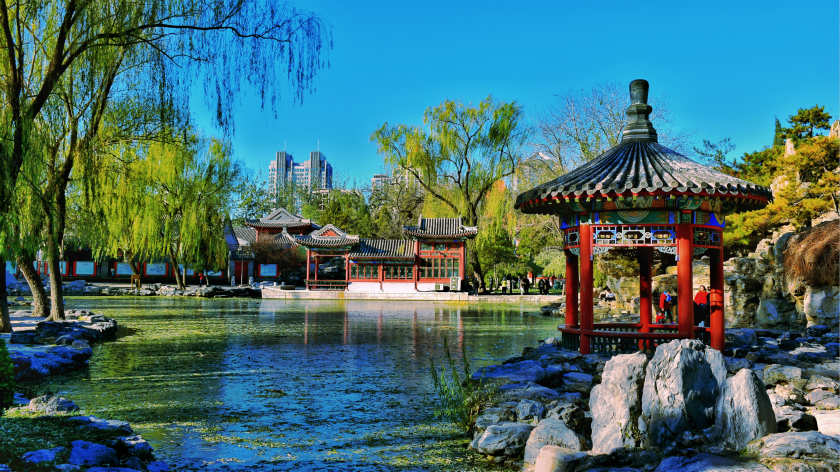Chinese Name: 日坛 Pronunciation: rì tán
Building Time: 1530
Admission Ticket Fare: Free
Opening Hours: 8:00-18:00
Recommended Time for Visit: 1-2 Hours
Occupied Area: 206,200 square meters
Best Visiting Season: April to November
Popular Activities: Fete-day activity holding in spring equinox every year.
Building Function: Emperors make ritual sacrifices to the sun.
Address: No. 6, Ritan North Road, Chaoyangmenwai, Chaoyang District, Beijing
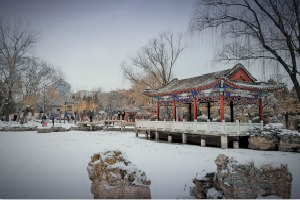
Located in the southeast of Chaoyangmenwai, Chaoyang District, Beijing, the Temple of the Sun is a 3A grade national tourist attraction. It was the place where the emperors of the Ming and Qing dynasties (1368-1912) offered sacrifices to the Sun God.
After the founding of the New China, the local government decided to expand it and turn it into a park. On May 25, 2006, as an ancient building from the Ming Dynasty to the Qing Dynasty, it was approved by the State Council to be included in the list of the sixth batch of national key cultural relic protection units.
The construction began in May of the ninth year (1530) of Jiajing Emperor (1522-1566) of the Ming Dynasty (1368-1644). The altar, surrounded by parapets, faces the west with red-colored glazes symbolizing the sun.
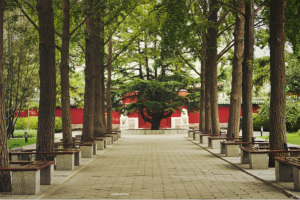
During the tenth year of the Jiajing Emperor, the whole altar construction was finished, while the palace buildings inside were completed in 1626.
In 1567, the altar was used as a special place for emperors to worship the Sun God. Since then there have been Emperor Chongzhen (1628-1644) of the Ming Dynasty, and Emperor Qianlong (1736-1796), Emperor Jiaqing, and Emperor Daoguang (1821-1850) of the Qing Dynasty (1636-1912) who paid a visit and offered sacrifices to the sun.
From the Republic of China to the eve of liberation, the buildings inside the Temple of the Sun gradually fell into ruin due to a lack of management.
Since the founding of the People’s Republic of China, much work and effective measures have been taken to the renovation and expansion of the Temple of the Sun. The People's Government of Beijing Municipality planned to turn it into a park with its area expanded to 206,200 square meters in 1956. The management office for the temple was set up in 1962.
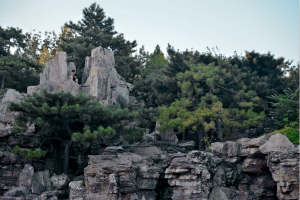
In October 1969, the completed park which is home to the Temple of the Sun began to receive visitors. Since then, more than one million people have visited it every year.
From 1991 to 1993, the park has seen a variety of folk activities, a tennis match, and a lantern show.
Entering the 21st century, the management office has established a series of systems for its well-placed operation. In 2002, the park was rated as one of the first quality parks in Beijing.
In 2006, the park was designated as the national key cultural relic protection unit.
In 2010, on the occasion of its 480th anniversary, the park carried out a protective renovation of ancient buildings.
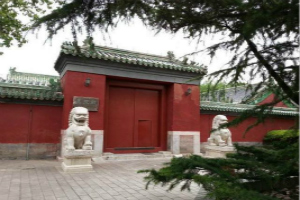
With a shape of a rectangular compound, the Jufu Palace served as a place in which the emperor changed garments before making sacrifices to the sun god and had a break. The palace boasts three main halls facing south, and each of which owns three minor halls inside.
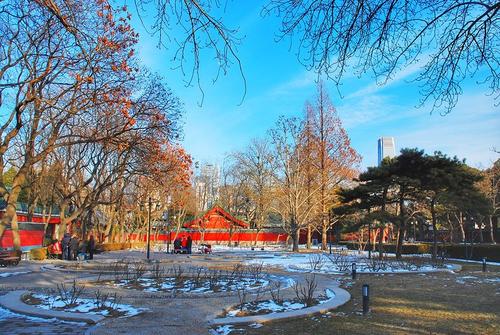
This section combines the style of South China gardens with that of the North China landscapes, owns a near 4,700-square-meter lake, as well as serves as an ideal place for taking a walk. Along the lake, you can see ancient-style pavilions and antique arch-bridges. What’s more, the lake winds around the path, opening up such an enchanting and quiet view.
The west-facing Holy Warehouse is used as a place to store the enshrined worship tablets, while the south-facing Holy Kitchen is the place where the oblations were made in the Ming and Qing Dynasties.
On March 20, 2011, the temple resumed its ritual, which had been suspended for more than 160 years. It was basically imitating "the Qing Dynasty worship to the sun" activity providing similar costumes and props. In general, the royal festival ceremony will not see ordinary people, but this time it was different, people not only participated in such a solemn ceremony but also enjoyed a special creative "worship" activity. The honor guard was played by armed police soldiers, the band performers were from the cultural courtyard of Chaoyang district, and the emperor and other worshipers were local cultural volunteers.
The North Gate→Memorial Room for Ma Jun (a martyr) →Sun Altar Museum →Worship Altar of the Sun →Worship Mural of the Sun →Free Exercise Plaza →Children's Amusement Park →Southwest Scenic Section → the South Gate
The West Gate→Western Heavenly Gate →Qinghui Pavilion →Yuxin Garden →Peony Garden →Livestock Slaughtering Pavilion →Mini Golf →Free Exercise Plaza →Children's Amusement Park → the South Gate
The South Gate→Southwest Scenic Section →Worship Mural of the Sun →Jiulong Cypress →Worship Altar of the Sun →Yuxin Garden →Northern Heavenly Gate →the North Gate
The South Gate: take bus 1, 4, or 729 and get off at the Ritanlu (Ritan Road) Station.
The West Gate: take bus 44, 800, or 750 and get off at the Yabaolu (Yabao Road) Station.
The North Gate: take bus 43, 110, or 28 and get off at the Fangcaodi Station.
Take Metro Line 1 or 2 and get off at the Jianguomen Station, and exit B, and then walk for about 1.8 kilometers to the South Gate.
Chinese: 请带我去日坛。English: Please take me to the Temple of the Sun.
Chinese: 请带我去日坛的南门。English: Please take me to the South Gate of the Temple of the Sun.
Chinese: 请带我去日坛的西门。English: Please take me to the West Gate of the Temple of the Sun.
Chinese: 请带我去日坛的北门。English: Please take me to the North Gate of the Temple of the Sun.
If you go to the Temple of the Sun from the center of Beijing (Grand Hyatt Beijing), it takes about 22 minutes (about 30 yuan).
If you go to the Temple of the Sun from Beijing Capital International Airport, it takes about 49 minutes (about 100 yuan).
If you go to the Temple of the Sun from Beijing Daxing International Airport, it takes about 68 minutes (about 190 yuan).
If you go to the Temple of the Sun from Beijing West Train Station, it takes about 38 minutes (about 65 yuan).
